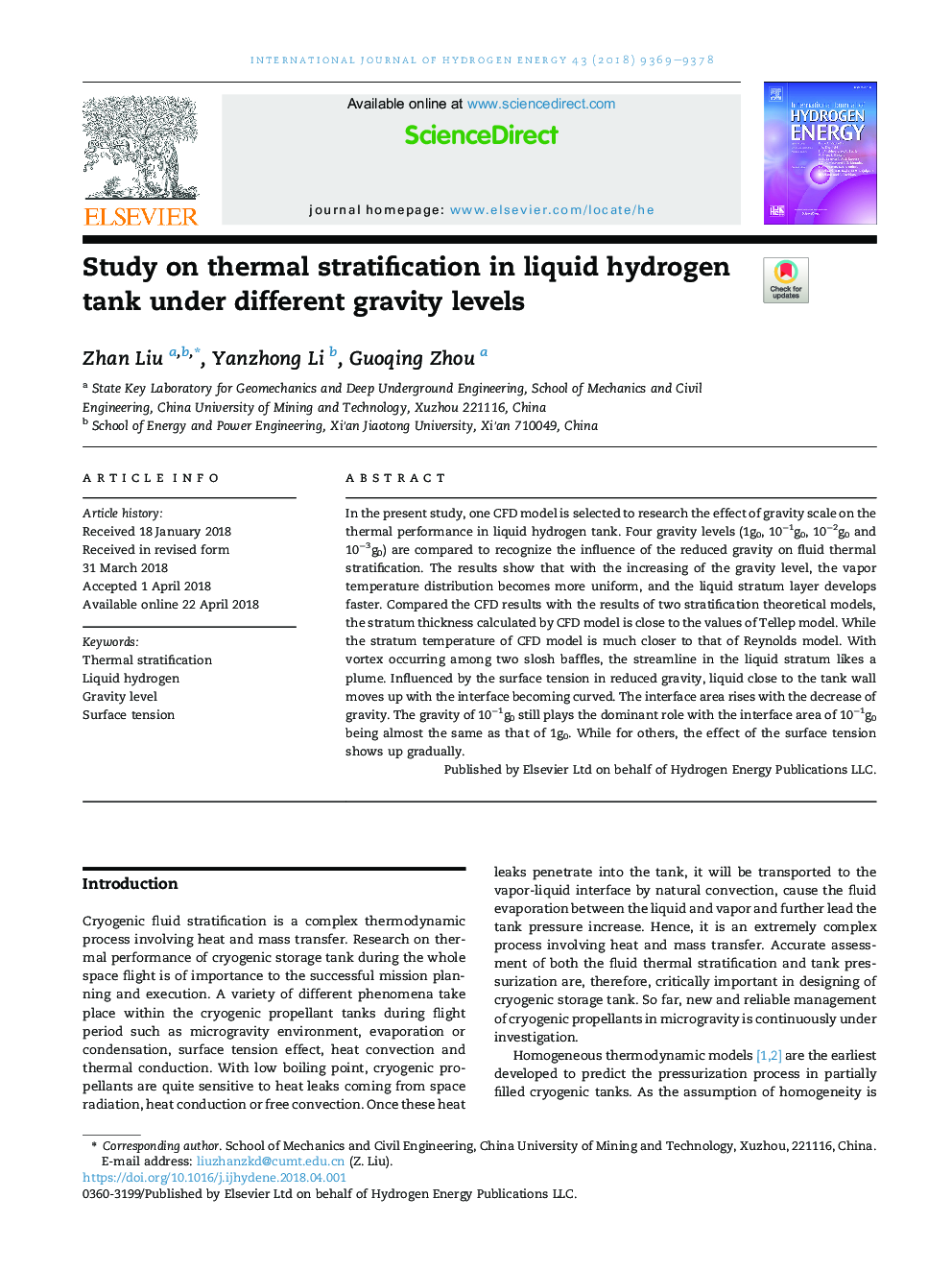| Article ID | Journal | Published Year | Pages | File Type |
|---|---|---|---|---|
| 7706159 | International Journal of Hydrogen Energy | 2018 | 10 Pages |
Abstract
In the present study, one CFD model is selected to research the effect of gravity scale on the thermal performance in liquid hydrogen tank. Four gravity levels (1g0, 10â1g0, 10â2g0 and 10â3g0) are compared to recognize the influence of the reduced gravity on fluid thermal stratification. The results show that with the increasing of the gravity level, the vapor temperature distribution becomes more uniform, and the liquid stratum layer develops faster. Compared the CFD results with the results of two stratification theoretical models, the stratum thickness calculated by CFD model is close to the values of Tellep model. While the stratum temperature of CFD model is much closer to that of Reynolds model. With vortex occurring among two slosh baffles, the streamline in the liquid stratum likes a plume. Influenced by the surface tension in reduced gravity, liquid close to the tank wall moves up with the interface becoming curved. The interface area rises with the decrease of gravity. The gravity of 10â1g0 still plays the dominant role with the interface area of 10â1g0 being almost the same as that of 1g0. While for others, the effect of the surface tension shows up gradually.
Related Topics
Physical Sciences and Engineering
Chemistry
Electrochemistry
Authors
Zhan Liu, Yanzhong Li, Guoqing Zhou,
